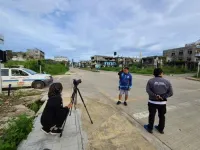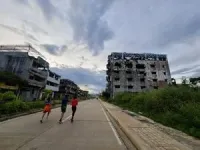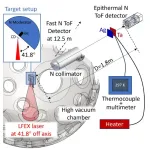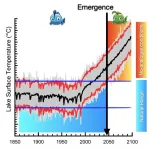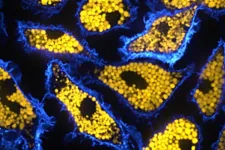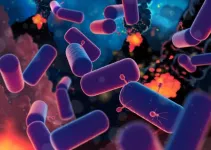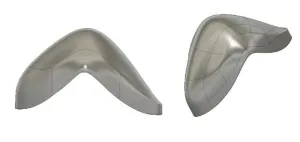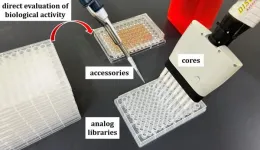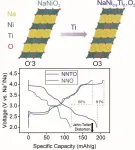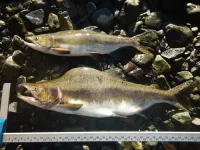(Press-News.org) Wars and conflicts leave devastating destruction in their wake. With so many conflicts now taking place in urban environments, scientists are studying how post-conflict peacebuilding happens in these urban settings. Dahlia Simangan, an associate professor at The IDEC Institute, Hiroshima University, has analyzed the case of Marawi, a city in the Philippines, to better understand the urban environment’s influence on post-siege reconstruction and peacebuilding. This study contributes to a more comprehensive understanding of peacebuilding by integrating conventional peacebuilding components and urban characteristics.
The findings are published in the Journal of Current Southeast Asian Affairs on May 22, 2024.
Although urban warfare is not a new occurrence, it has changed in recent years as conflicts ranging from gang violence to terrorist attacks increasingly take place in urban environments. These conflicts occur in both developed and developing societies. As the population in urban areas rises, people living in these areas are finding the consequences of the conflicts falling closer and closer to their homes. Where the population is dense in urban areas, the impact of the conflict is more widespread and the “enemies” are less easy to identify. These urban conflicts today are impacting the lives of civilians in ways that the traditional wars of past years did not, and the ways lives are impacted are not always visible. Because of this, cities under siege need a unique set of rebuilding tools relevant to the urban environment, including the people, places, and practices that make them.
“In a rapidly urbanizing world, the nature of conflicts has also taken up urban characteristics. This study aims to understand how post-conflict peacebuilding can effectively operate in urban environments,” said Simangan.
Simangan focused the study on the city of Marawi, where in 2017, a five-month battle between Islamic State-inspired militant groups and the Philippine military occurred, resulting in the longest urban warfare in the country since World War II. This “Battle of Marawi” or “Marawi Siege” claimed the lives of about 920 militants, including the group leaders, 165 soldiers, and 47 civilians. Because of the conflict, 360,000 people from the city and neighboring areas were forcibly displaced. While the government has started an interagency reconstruction effort, the ruins of residential houses, commercial buildings, and places of worship are now part of Marawi’s urbanscape.
The case of Marawi offers insights into how post-conflict peacebuilding can effectively operate in urban environments. Simangan explored how the urbanscape of Marawi influences its reconstruction and peacebuilding. She specifically examined the role of people, places, and practices in building or impeding security, justice and reconciliation, and economic development in post-siege Marawi.
This study advances an integrated framework for analyzing urban peacebuilding, using the conventional peacebuilding components of security, reconciliation, and development within Marawi City’s people, places, and practices.
Simangan used focus group discussions to gather data, examining practical issues like security, for example, the clearance of unexploded ordnances. She examined reconciliation, especially the return of displaced persons, and explored development, specifically looking at how the people resumed their livelihoods.
“Urban spaces can facilitate everyday practices that can hinder or promote peace. Understanding the social significance and historical relevance of these spaces can guide the reconstruction and peacebuilding process of conflict-affected cities,” said Simangan.
Simangan is also working with a group of peacebuilding scholars on a research project about citizen inclusion in peace settlements. “I would like to apply the integrated conceptual framework on urban peacebuilding lens that I developed from this study to understand the power dynamics surrounding post-conflict settlements in cities,” Simangan said. Relatedly, she will continue the development of an urban peacebuilding geoportal documenting the transformation of conflict-affected cities by adding more case studies.
Dahlia Simangan works at the Center for Peaceful and Sustainable Futures, The IDEC Institute, Hiroshima University. The work is funded by the Japan Society for the Promotion of Science.
Dr. Simangan encourages students, researchers, and practitioners who are interested in this topic to visit this site: https://urban-peacebuilding.github.io/
###
About Hiroshima University
Since its foundation in 1949, Hiroshima University has striven to become one of the most prominent and comprehensive universities in Japan for the promotion and development of scholarship and education. Consisting of 12 schools for undergraduate level and 4 graduate schools, ranging from natural sciences to humanities and social sciences, the university has grown into one of the most distinguished comprehensive research universities in Japan. English website: https://www.hiroshima-u.ac.jp/en
END
Challenges and prospects for post-conflict peacebuilding in urban settings
A case study in post-siege Marawi City, Philippines
2024-07-12
ELSE PRESS RELEASES FROM THIS DATE:
Neutrons give a hot new way to measure the temperature of electronic components
2024-07-12
Osaka, Japan – From LEDs to batteries, our lives are full of electronics, and there is a constant push to make them more efficient and reliable. But as components become increasingly sophisticated, getting reliable temperature measurements of specific elements inside an object can be a challenge.
This is problematic because measuring a device’s temperature is vital for monitoring its performance or designing the materials from which it’s manufactured. Now, in a new study led by Osaka ...
High and low tide cause low and high methane fluxes
2024-07-12
High and low tide cause low and high methane fluxes
Methane, a strong greenhouse gas that naturally escapes from the bottom of the North Sea, is affected by the pressure of high or low tide. Methane emissions from the seafloor can be just easily three times as much or as little, depending on the tide. This is shown by NIOZ oceanographer Tim de Groot, in a publication in Nature Communications Earth and Environment. "Our research shows that you can never rely on one measurement when you want to know how much methane escapes from the seafloor," De Groot emphasizes.
Swamp ...
A better way to make RNA drugs
2024-07-12
While the COVID-19 vaccines introduced many people to RNA-based medicines, RNA oligonucleotides have already been on the market for years to treat diseases like Duchenne Muscular Dystrophy and amyloidosis. RNA therapies offer many advantages over traditional small molecule drugs, including their ability to address almost any genetic component within cells and to guide gene editing tools like CRISPR to their targets.
However, the promise of RNA is currently limited by the fact that rapidly growing global demand is outpacing the industry’s ability to manufacture it. The standard method of chemically ...
Unprecedented warming threatens earth’s lakes and their ecosystems
2024-07-12
Lakes, with their rich biodiversity and important ecological services, face a concerning trend: rapidly increasing temperatures. A recent study published in Nature Geoscience by an international team of limnologists and climate modelers reveals that if current anthropogenic warming continues until the end of this century, lakes worldwide will likely experience pervasive and unprecedented surface and subsurface warming, far outside the range of what they have encountered before.
The study uses lake temperature ...
Cellular inflammation uncovered in rare neurodegenerative condition
2024-07-12
Researchers at The Hospital for Sick Children (SickKids) have found that inflammation in an immune cell may be responsible in part for some severe symptoms in a group of rare genetic conditions called lysosomal storage diseases (LSDs).
LSDs affect about one in 7,700 live births worldwide. Children with the condition typically present at a young age with progressive neurodegeneration. Many children with LSDs die prematurely, and current treatments focus on symptom management.
Until now, the role of macrophages in the immune system and LSDs was ...
Insight into one of life’s earliest ancestors revealed in new study
2024-07-12
An international team of researchers led by the University of Bristol has shed light on Earth’s earliest ecosystem, showing that within a few hundred million years of planetary formation, life on Earth was already flourishing.
Everything alive today derives from a single common ancestor known affectionately as LUCA (Last Universal Common Ancestor).
LUCA is the hypothesized common ancestor from which all modern cellular life, from single celled organisms like bacteria to the gigantic redwood trees (as well as us humans) descend. LUCA represents the root ...
Real-life ‘stillsuit’: Dune-inspired upgrade for spacesuits allow astronauts to recycle urine into water
2024-07-12
Astronauts on spacewalks famously have to relieve themselves inside their spacesuits. Not only is this uncomfortable for the wearer and unhygienic, it is also wasteful, as – unlike wastewater on board the International Space Station (ISS) – the water in urine from spacewalks is not recycled.
A solution for these challenges would be full-body ‘stillsuits’ like those in the blockbuster Dune franchise, which absorbed and purified water lost through sweating and urination, and recycled it into drinkable water. Now, this sci-fi ...
A comprehensive derivative synthesis method for development of new antimicrobial drugs
2024-07-12
A method to screen a wide variety of drug candidates without laborious purification steps could advance the fight against drug-resistant bacteria.
Efforts to combat the increasing threat of drug-resistant bacteria are being assisted by a new approach for streamlining the search for antimicrobial drug candidates, pioneered by researchers at Hokkaido University, led by Assistant Professor Kazuki Yamamoto and Professor Satoshi Ichikawa of the Faculty of Pharmaceutical Sciences. Their methods, developed together with researchers elsewhere in Japan and in the USA, are discussed ...
Improving cycling performance of sodium-ion batteries through titanium substitution
2024-07-12
Researchers at Karlsruhe Institute of Technology (KIT) have made significant advances in sodium-ion battery (SIB) technology by improving cycling performance of the NaNiO2 cathode. They successfully synthesized, for the first time, the cathode active material NaNi0.9Ti0.1O2, which delivers a specific capacity of 190 mAh/g, thus positioning it as a potential candidate for application in high-energy-density SIBs. This innovative approach not only improves battery stability but also propels us toward advanced energy-storage solutions beyond.
With its high theoretical ...
Hatcheries can boost wild salmon numbers but reduce diversity
2024-07-12
The ability of salmon hatcheries to increase wild salmon abundance may come at the cost of reduced diversity among wild salmon, according to a new University of Alaska Fairbanks–led study.
The number of juvenile salmon released into the North Pacific Ocean by hatcheries increased rapidly in the second half of the last century and remains at over 5 billion each year. Salmon hatcheries have helped push annual pink salmon harvests in Prince William Sound from about 4 million fish prior to hatchery programs to roughly 50 million in recent years.
Using data collected from pink salmon streams ...
LAST 30 PRESS RELEASES:
Why nail-biting, procrastination and other self-sabotaging behaviors are rooted in survival instincts
Regional variations in mechanical properties of porcine leptomeninges
Artificial empathy in therapy and healthcare: advancements in interpersonal interaction technologies
Why some brains switch gears more efficiently than others
UVA’s Jundong Li wins ICDM’S 2025 Tao Li Award for data mining, machine learning
UVA’s low-power, high-performance computer power player Mircea Stan earns National Academy of Inventors fellowship
Not playing by the rules: USU researcher explores filamentous algae dynamics in rivers
Do our body clocks influence our risk of dementia?
Anthropologists offer new evidence of bipedalism in long-debated fossil discovery
Safer receipt paper from wood
Dosage-sensitive genes suggest no whole-genome duplications in ancestral angiosperm
First ancient human herpesvirus genomes document their deep history with humans
Why Some Bacteria Survive Antibiotics and How to Stop Them - New study reveals that bacteria can survive antibiotic treatment through two fundamentally different “shutdown modes”
UCLA study links scar healing to dangerous placenta condition
CHANGE-seq-BE finds off-target changes in the genome from base editors
The Journal of Nuclear Medicine Ahead-of-Print Tip Sheet: January 2, 2026
Delayed or absent first dose of measles, mumps, and rubella vaccination
Trends in US preterm birth rates by household income and race and ethnicity
Study identifies potential biomarker linked to progression and brain inflammation in multiple sclerosis
Many mothers in Norway do not show up for postnatal check-ups
Researchers want to find out why quick clay is so unstable
Superradiant spins show teamwork at the quantum scale
Cleveland Clinic Research links tumor bacteria to immunotherapy resistance in head and neck cancer
First Editorial of 2026: Resisting AI slop
Joint ground- and space-based observations reveal Saturn-mass rogue planet
Inheritable genetic variant offers protection against blood cancer risk and progression
Pigs settled Pacific islands alongside early human voyagers
A Coral reef’s daily pulse reshapes microbes in surrounding waters
EAST Tokamak experiments exceed plasma density limit, offering new approach to fusion ignition
Groundbreaking discovery reveals Africa’s oldest cremation pyre and complex ritual practices
[Press-News.org] Challenges and prospects for post-conflict peacebuilding in urban settingsA case study in post-siege Marawi City, Philippines
